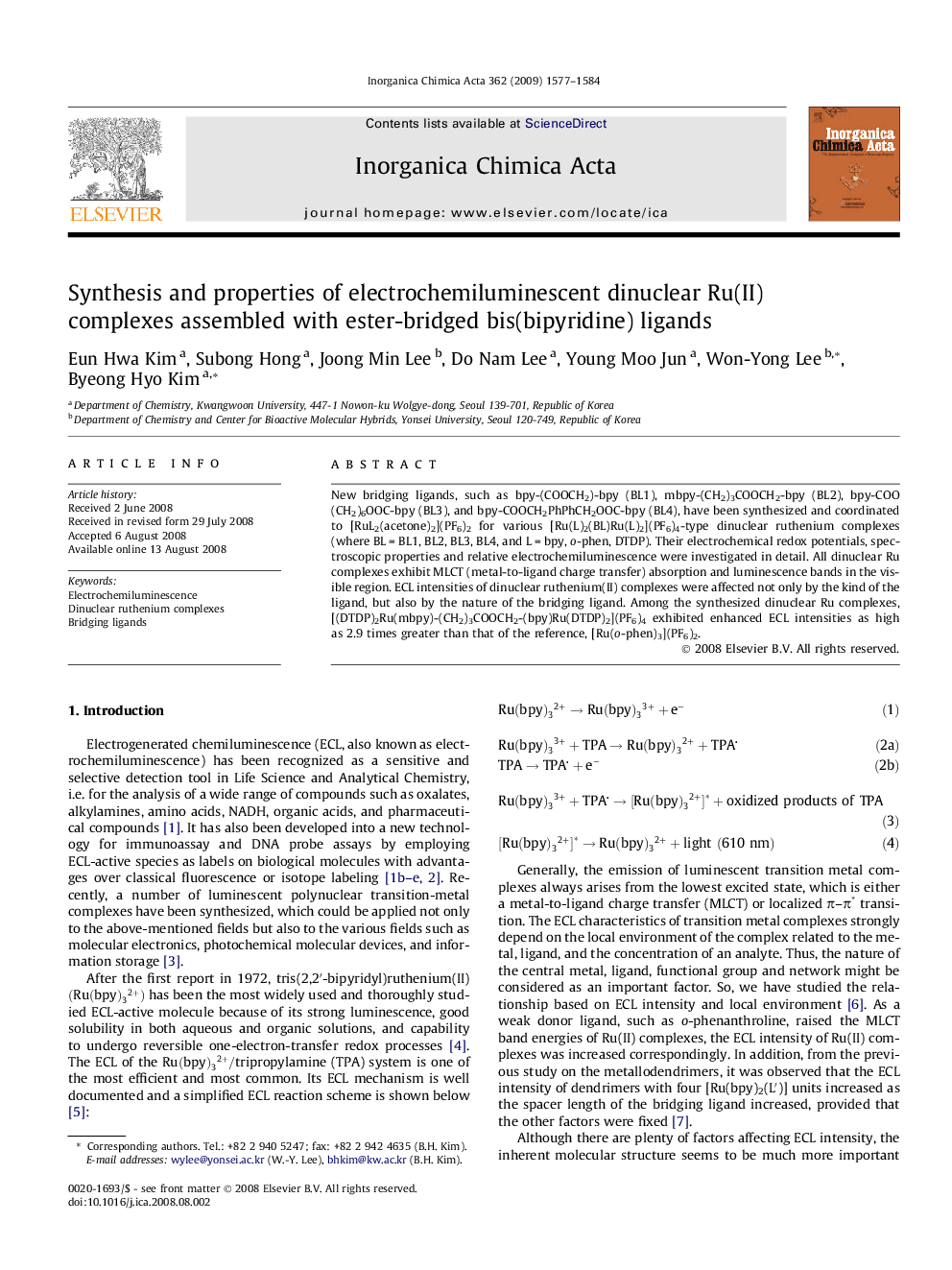| Article ID | Journal | Published Year | Pages | File Type |
|---|---|---|---|---|
| 1312693 | Inorganica Chimica Acta | 2009 | 8 Pages |
New bridging ligands, such as bpy-(COOCH2)-bpy (BL1), mbpy-(CH2)3COOCH2-bpy (BL2), bpy-COO(CH2)6OOC-bpy (BL3), and bpy-COOCH2PhPhCH2OOC-bpy (BL4), have been synthesized and coordinated to [RuL2(acetone)2](PF6)2 for various [Ru(L)2(BL)Ru(L)2](PF6)4-type dinuclear ruthenium complexes (where BL = BL1, BL2, BL3, BL4, and L = bpy, o-phen, DTDP). Their electrochemical redox potentials, spectroscopic properties and relative electrochemiluminescence were investigated in detail. All dinuclear Ru complexes exhibit MLCT (metal-to-ligand charge transfer) absorption and luminescence bands in the visible region. ECL intensities of dinuclear ruthenium(II) complexes were affected not only by the kind of the ligand, but also by the nature of the bridging ligand. Among the synthesized dinuclear Ru complexes, [(DTDP)2Ru(mbpy)-(CH2)3COOCH2-(bpy)Ru(DTDP)2](PF6)4 exhibited enhanced ECL intensities as high as 2.9 times greater than that of the reference, [Ru(o-phen)3](PF6)2.
Graphical abstractNew bridging ligands, such as bpy-(COOCH2)-bpy (BL1), mbpy-(CH2)3COOCH2-bpy (BL2), bpy-COO(CH2)6OOC-bpy (BL3), and bpy-COOCH2PhPhCH2OOC-bpy (BL4), have been synthesized and coordinated to [RuL2(acetone)2](PF6)2 for various [Ru(L)2(BL)Ru(L)2](PF6)4-type dinuclear ruthenium complexes (where BL = BL1, BL2, BL3, BL4, and L = bpy, o-phen, DTDP). Their electrochemical redox potentials, spectroscopic properties and relative electrochemiluminescence were investigated in detail.Figure optionsDownload full-size imageDownload as PowerPoint slide
